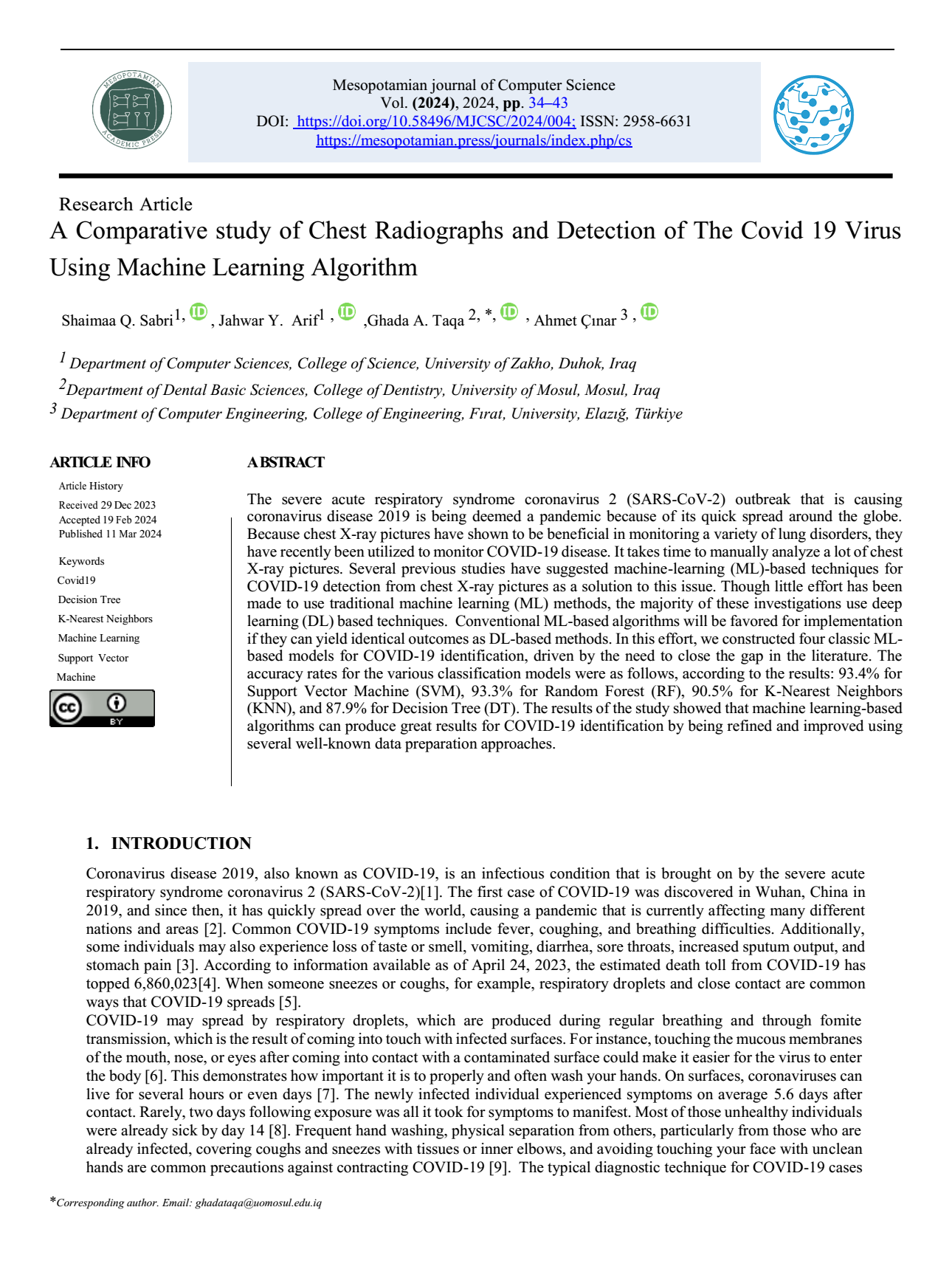A Comparative study of Chest Radiographs and Detection of The Covid 19 Virus Using Machine Learning Algorithm
Main Article Content
Abstract
The severe acute respiratory syndrome coronavirus 2 (SARS-CoV-2) outbreak that is causing coronavirus disease 2019 is being deemed a pandemic because of its quick spread around the globe. Because chest X-ray pictures have shown to be beneficial in monitoring a variety of lung disorders, they have recently been utilized to monitor COVID-19 disease. It takes time to manually analyze a lot of chest X-ray pictures. Several previous studies have suggested machine-learning (ML)-based techniques for COVID-19 detection from chest X-ray pictures as a solution to this issue. Though little effort has been made to use traditional machine learning (ML) methods, the majority of these investigations use deep learning (DL) based techniques. Conventional ML-based algorithms will be favored for implementation if they can yield identical outcomes as DL-based methods. In this effort, we constructed four classic ML-based models for COVID-19 identification, driven by the need to close the gap in the literature. The accuracy rates for the various classification models were as follows, according to the results: 93.4% for Support Vector Machine (SVM), 93.3% for Random Forest (RF), 90.5% for K-Nearest Neighbors (KNN), and 87.9% for Decision Tree (DT). The results of the study showed that machine learning-based algorithms can produce great results for COVID-19 identification by being refined and improved using several well-known data preparation approaches.
Article Details
Issue
Section

This work is licensed under a Creative Commons Attribution 4.0 International License.
